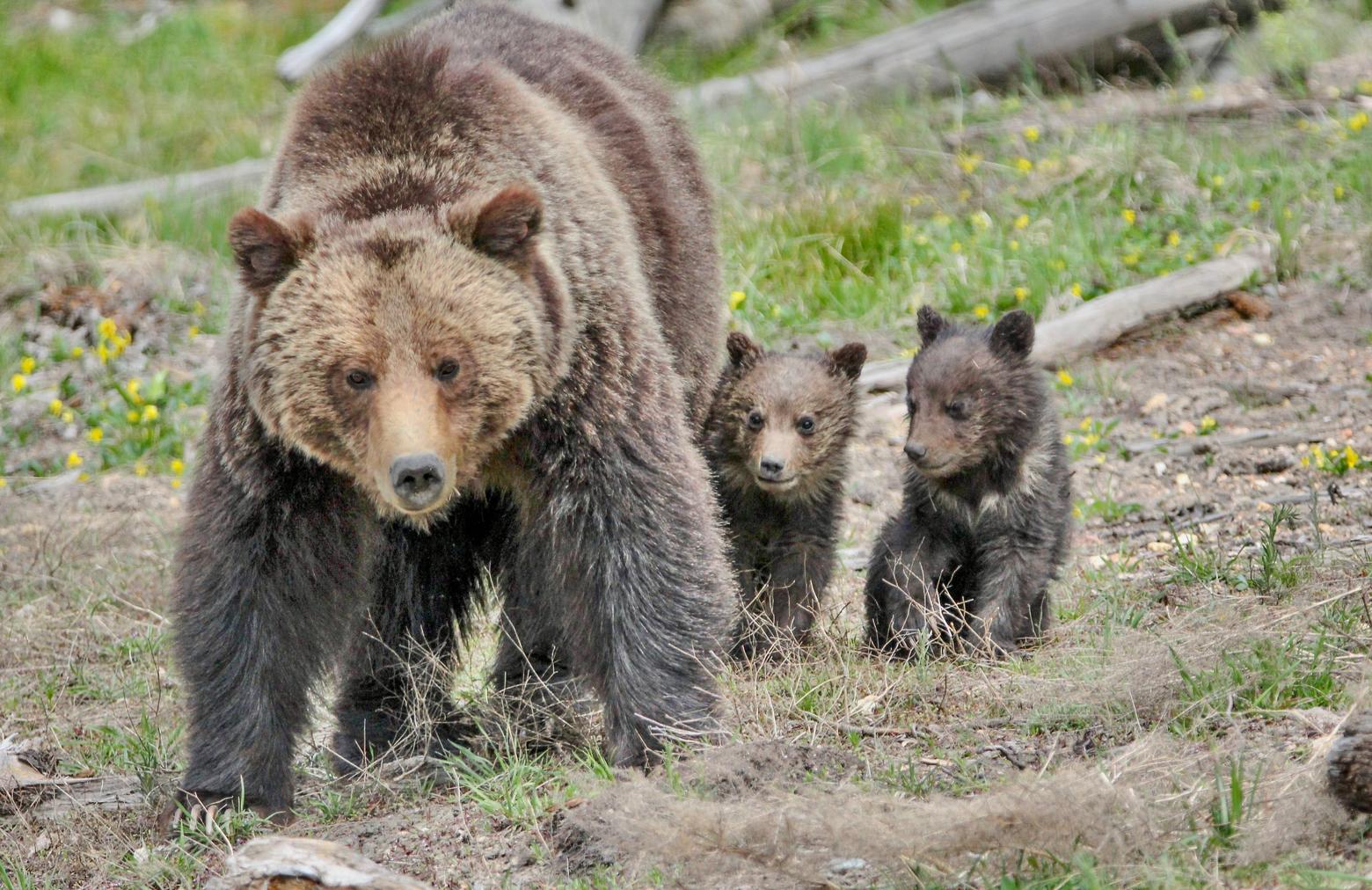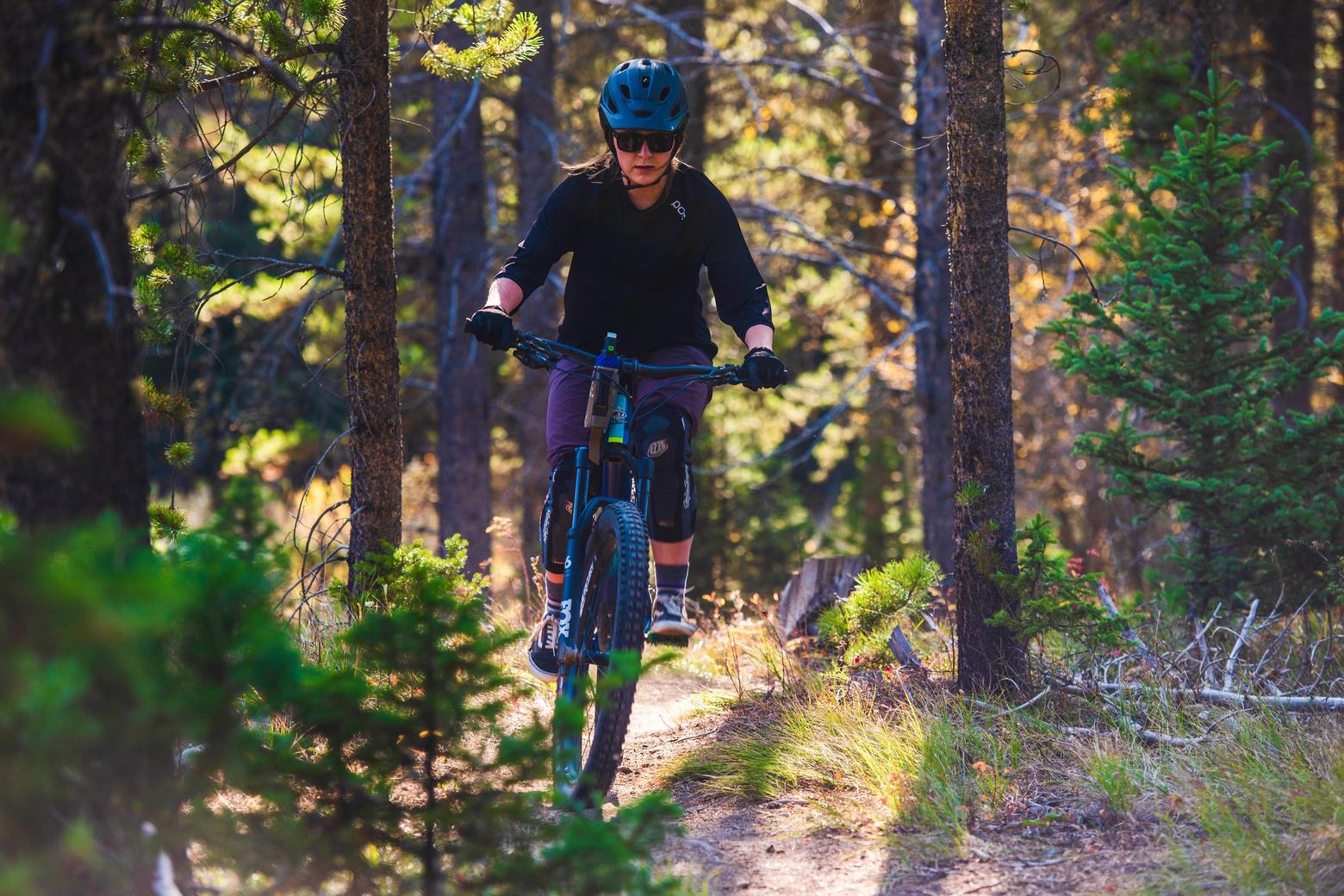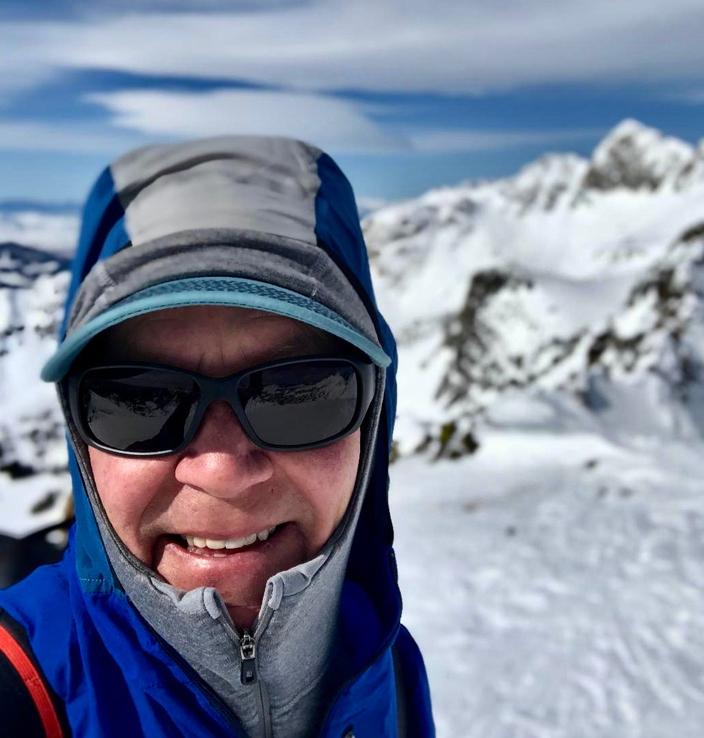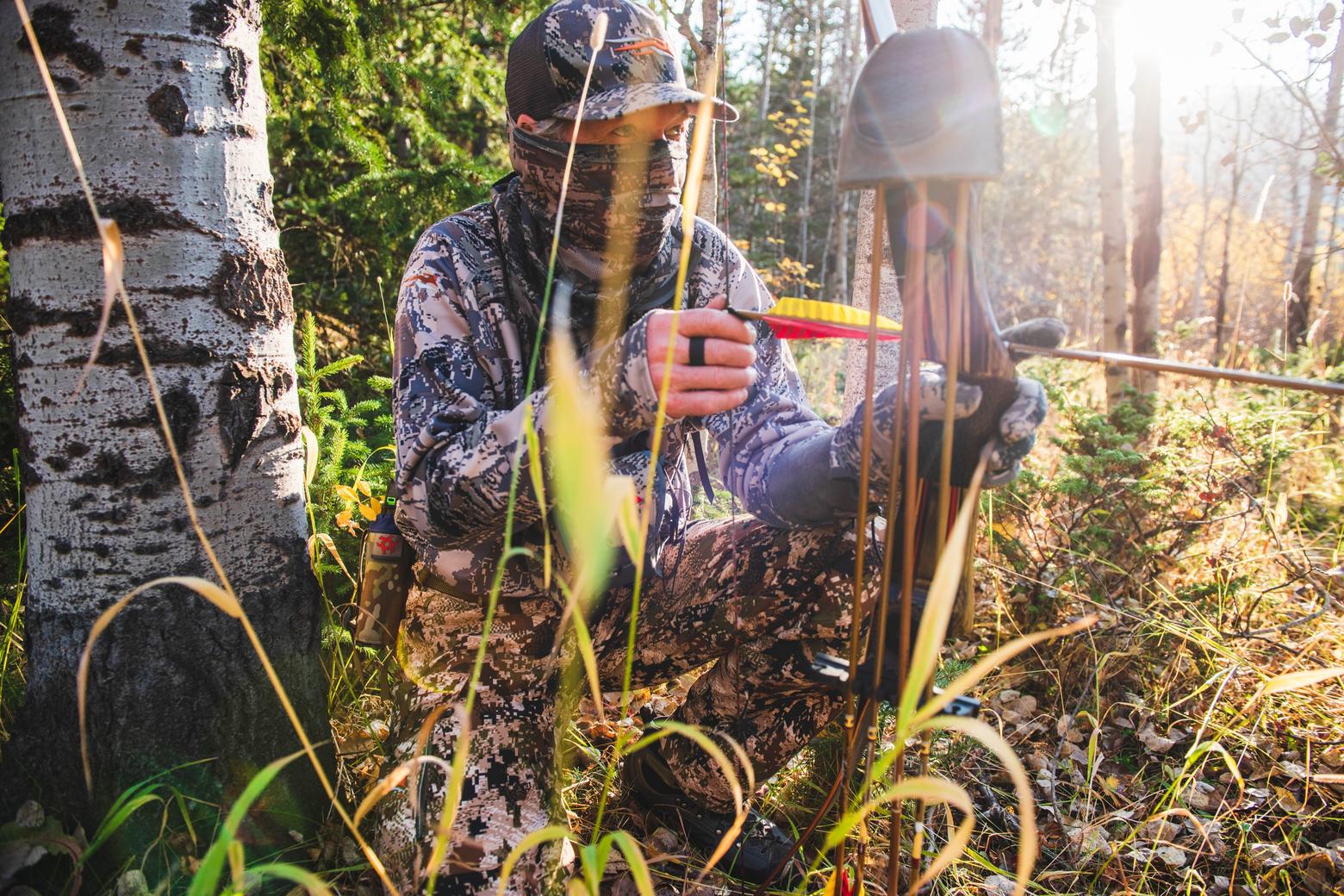Back to StoriesWhen Entering Griz Country: New Holster Makes Bear Spray Quicker On The Draw
For clothing and gear manufacturers like Sitka, Patagonia, Arc’Teryx, and Simms—among others—Siberell has designed or improved products that not only look and feel good to wear, but they repel the elements, keep anglers' feet dry and are engineered to work in a pinch.
April 12, 2022
When Entering Griz Country: New Holster Makes Bear Spray Quicker On The DrawIf bear spray isn't readily accessible, what good is it? Richard Siberell's 'Bearosol Holster' designed to give mountain bikers and others easier reach to spray when bears appear and seconds matter
by Todd Wilkinson
Richard Siberell is a legendary maven of form follows function. It’s highly possible that in recent years, if you’ve ventured into the wild outdoors with a jacket, mid-layer of fleece or pack on your back, you’ve intersected with Siberell’s inventive handiwork.
For clothing and gear manufacturers like Sitka, Patagonia, Arc’Teryx, and Simms—among others—Siberell has designed or improved products that not only look and feel good to wear, but they repel the elements, keep anglers' feet dry and are engineered to work in a pinch.
Now the Bozeman-based innovator is going beyond the beta phase of a new product—an accoutrement custom-made for people venturing into grizzly bear country. Called The Bearosol Holster®, it’s a specialized, adaptable holster for carrying conventional bear spray brands. It doesn't improve dispensing of the non-lethal spray in the cans but makes it easier to have cans at the ready.
The holster is versatile; it can be tactically placed on the handlebars of a mountain bike, or strapped to a backpack, fishing waders or, if you’re a trail runner, gripped comfortably in the hand.
The purpose, he says, is increasing the speed at which an outdoor person can draw a bear spray cannister when a bear encounter occurs and seconds matter.
Part of the inspiration, Siberell admits, is his own relentless fixation on form and function; another motivator is more personal. He, too, is an avid mountain biker, spring skier and autumn bow hunter. He’s often out when and where grizzlies are, and he’s thought long and hard about the conditions when sudden, perilous encounters with bears (or even moose and cougars) might arise.
“A big problem is that while the number of people who carry bear spray with them is growing—and that’s good—there have been numerous reports of hikers, mountain bikers, hunters and others who weren’t able to get the can deployed in time,” he said. “Either it was in their backpack or they couldn’t extract the can from the holster. If a can is stuffed into your backpack and you can’t get to it quickly, it’s like not having bear spray at all.”
Yellowstone National Park recommends that hikers travel in groups of four or more, that you carry bear spray and know how to use it, make noise to alert any bears of your presence, especially in areas with a lot of brush and along rivers where sounds can be muffled, stay away from carcasses, and if you see a grizzly in the distance ahead of you near the trail, turn around. In national parks, hiking with dogs and having them off leash anywhere is prohibited.
Outside the park, the same rules for ostensibly preventing dangerous encounters with bears and other animals apply but for some reason, even in areas outside parks with large densities of grizzlies, they go unheeded. Hunters and others who veer off trail often move quietly and strealthfully, and field dress big game animals which can attract bears.
It’s easy to second guess human actions after the fact of a human-bear counter, Siberell notes, but there’s often speculation about how, if bear spray had been more at the ready, it might have made a positive difference. Although Siberell has been the genius behind developing product features and constructions on jackets, waders and worked to engineer backpacks to better ergonomically distribute loads, failures for users in those cases tend not to be catastrophic.
The successful deployment of bear spray can be a different matter. Siberell reflects somberly on a number of fatal and severe maulings by grizzly bears involving bikers, hunters and backcountry wanderers who had little reaction time. One incident that attracted a lot of attention was the death of Forest Service law enforcement officer Brad Treat.
While out on a mountain bike ride during his day off on June 29, 2016, the 38-year-old Treat literally ran into a grizzly on a trail in the Flathead National Forest at high speed. In the immediate aftermath, investigators concluded, the bruin likely responded defensively, instinctually believing it was being attacked, and then fatally injured Treat.
“The bear apparently had no time to move to avoid the collision. At a speed of 20-25 miles per hour, there were only one-to-two seconds between rounding the curve, the victim seeing the bear in the trail and impacting the bear,” wrote investigators with the interagency Board of Inquiry which is summoned to review circumstances following a grizzly-caused human mortality.
“The bear apparently had no time to move to avoid the collision. At a speed of 20-25 miles per hour, there were only one-to-two seconds between rounding the curve, the victim seeing the bear in the trail and impacting the bear." —Findings from Board of Inquiry into fatal grizzly mauling of Brad Treat who ran into a bear while riding his mountain bike in Montana
Dr. Christopher Servheen, who for three decades was the national Grizzly Bear Recovery Coordinator for the US Fish and Wildlife Service before retiring, served on the Board of Inquiry that investigated the Treat incident.
Servheen has warned that mountain biking is far more perilous than hiking in grizzly country, especially areas with higher densities of bears and incidents where people startle protective mother bears with cubs. Riding quietly and fast, with heads turned down and attention transfixed on the trail in order to avoid wrecks with trees or boulders—and often coming around blind corners—this is a recipe for disaster in bear country, he said.
Servheen is not anti-mountain bike but he says there are better places to engage in the activity outside prime grizzly habitat. Notably, Servheen’s own sons are mountain bikers. You can read more about the Treat incident in a final report released by investigators with the Interagency Board of Inquiry. Of equal importance, the Board of Inquiry also made recommendations for how mountain bikers ought to approach recreating in grizzly country.
Besides the Treat incident, a couple of things catalyzed Siberell’s focus on bear spray holsters. A few years ago while out on a bike ride in the western Gallatin Mountains between Bozeman and Big Sky, a friend took a spill on her mountain bike and it caused a can of bear spray to accidentally deploy in her face. Both of them had bear spray cans attached to their bikes with ski straps. That prompted Siberell to wonder how the can and holster could be better positioned.
But it’s been other human-bear incidents, especially some involving mountain bikers, that put him into deep thinking mode. In summer 2020, a mountain biker riding near Ouzel Falls Road inside the Spanish Peaks subdivision in Big Sky came around a blind corner and a grizzly was standing on the trail. The bear attacked and seriously mauled the hiker. Would bear spray available to the rider on the handlebars of his bike have made a difference?
Last year, on April 15, 2021, Carl Mock was severely mauled by a grizzly and died two days later after encountering a bear near Bakers Hole of the Madison River near US Highway 191 and just north of West Yellowstone, Montana. Mock had gone to the river with a camera and fishing gear.
Investigators later discovered that he was, perhaps, unknowingly, hiking in the vicinity of a male grizzly on a moose carcass. Mock was attacked once, called 911, and before emergency responders could arrive, the bear returned. He had emptied a can of bear spray and there was evidence that it probably repelled the grizzly during the first encounter.
It was another fatal incident, involving a Wyoming hunting guide leading a Florida bow hunter into the Teton Wilderness 44 miles northeast of Jackson, Wyoming, that attracted Siberell’s attention. Veteran hunting guide Mark Uptain was killed by a female grizzly on Sept. 14, 2018 as he and his client were following a blood trail, looking for an elk that had been wounded the day before.
Uptain carried both bear spray and a Glock firearm but it was later found with other gear about 10 yards away from where the fatal mauling occurred.. Investigators stated that bear spray had been used; Uptain’s handgun had not. The client grabbed the handgun but did not know how to operate it; he accidentally ejected the magazine, then threw the unloaded weapon in Uptain's general direction. A report recounting evidence at the scene indicated that bear spray may have been used after the bear already had inflicted injury upon Uptain. It also noted that Uptain’s client was not carrying bear spray.
While having two cans of bear spray available may have helped in both the Mock and Uptain cases, and though a ©Bearosol Holster wouldn’t have improved matters, the take-home message is that when bear spray is available, easy to be deployed properly and its cloud of contents strike the face of an approaching grizzly, it often works. In fact, the Interagency Grizzly Bear Committee, state fish and game departments in the Northern Rockies and land management agencies strongly recommend that recreationists carry bear spray.
“All of these incidents underscore the need for situational awareness and practicing with bear spray, so that when you do have to deploy rapidly and in close-range, you have a chance at being able to do that effectively,” grizzly co-existence expert Steve Primm, now with the community conservation group FutureWest, told reporter Mike Koshmyrl with the Jackson Hole News & Guide after the Uptain attack.
“All of these incidents underscore the need for situational awareness and practicing with bear spray, so that when you do have to deploy rapidly and in close-range, you have a chance at being able to do that effectively." —Grizzly co-existence expert Steve Primm with community conservation organization FutureWest
Primm, who has pored over dozens of reports pertaining to human-grizzly encounters, told Koshmyrl that recreationists engaged in activities such as mountain biking and trail running need to understand they are heightening their own level of danger.
“I think there are a lot of places where we shouldn’t be encouraging those kinds of uses,” Primm said. “But I hope people recognize that if they are going to do something like that in grizzly bear habitat, it’s inherently risky and there are places where what they ought to be doing is slowing way down and making noise.”
Over the years, some bear spray users have complained of holsters either not being wholly conducive to rapid can removal or of misadventures that happen when, after removing the safety clip at the top of a can, an errant bump can trigger accidental discharge.
With his pencil and drafting paper, Siberell made drawings of a new holster prototype then he went to work with different kinds of durable fabric and sat down with his sewing machines. ©Bearosol’s outer shell allows for it to be strapped to a bike’s handlebars or attached to a backpack so that the can doesn’t flop around. He then subjected it to numerous trial runs. Until this year, awareness of ©Bearosol has spread mostly via word of mouth. It sells for $59 at his website and, already, a number of outdoor retail stores have made orders.
This story is not an endorsement or guarantee of ©Bearosol’s efficacy, nor does Siberell himself claim the holster is 100 percent foolproof. But many see it as a simple yet marked improvement over existing holsters and it has mountain bikers in mind. With Siberell’s track record of working on some of the most popular gear products of all time and with himself being a passionate user of the backcountry, who better to make form improve the function?
NOTE: Also read: To Live Or Die In Bear Country: Counting The Seconds In Your Grizzly Moment Of Truth. To watch a demonstration on how to use bear spray from Yellowstone National Park's lead grizzly bear biologist Kerry Gunther, click here. The video below features interviews with wildlife researchers in Yellowstone who were charged by a grizzly mother who had cubs at her side and they used bear spray to thwart a potential mauling.








